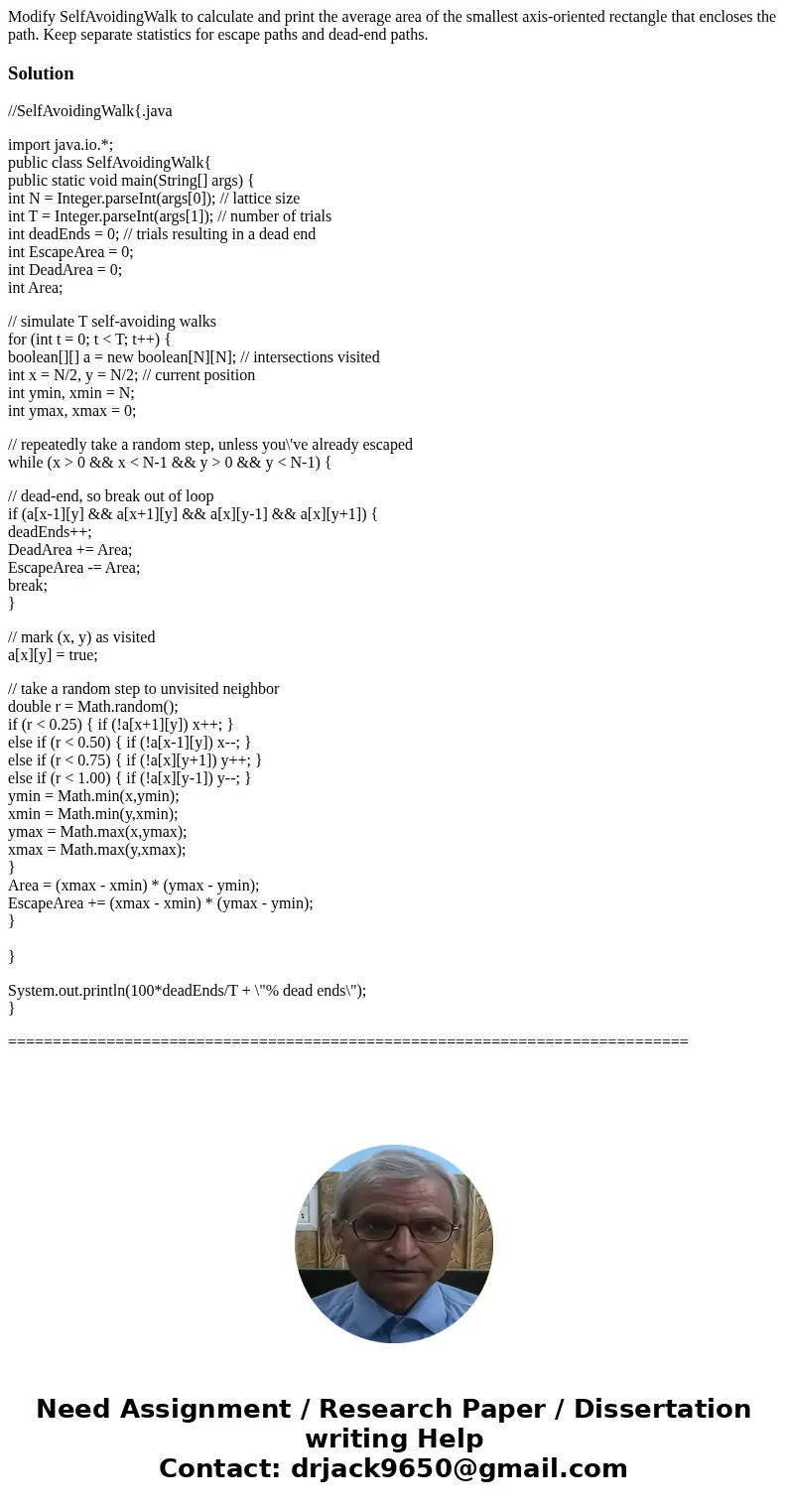Modify SelfAvoidingWalk to calculate and print the average a
Modify SelfAvoidingWalk to calculate and print the average area of the smallest axis-oriented rectangle that encloses the path. Keep separate statistics for escape paths and dead-end paths.
Solution
//SelfAvoidingWalk{.java
import java.io.*;
public class SelfAvoidingWalk{
public static void main(String[] args) {
int N = Integer.parseInt(args[0]); // lattice size
int T = Integer.parseInt(args[1]); // number of trials
int deadEnds = 0; // trials resulting in a dead end
int EscapeArea = 0;
int DeadArea = 0;
int Area;
// simulate T self-avoiding walks
for (int t = 0; t < T; t++) {
boolean[][] a = new boolean[N][N]; // intersections visited
int x = N/2, y = N/2; // current position
int ymin, xmin = N;
int ymax, xmax = 0;
// repeatedly take a random step, unless you\'ve already escaped
while (x > 0 && x < N-1 && y > 0 && y < N-1) {
// dead-end, so break out of loop
if (a[x-1][y] && a[x+1][y] && a[x][y-1] && a[x][y+1]) {
deadEnds++;
DeadArea += Area;
EscapeArea -= Area;
break;
}
// mark (x, y) as visited
a[x][y] = true;
// take a random step to unvisited neighbor
double r = Math.random();
if (r < 0.25) { if (!a[x+1][y]) x++; }
else if (r < 0.50) { if (!a[x-1][y]) x--; }
else if (r < 0.75) { if (!a[x][y+1]) y++; }
else if (r < 1.00) { if (!a[x][y-1]) y--; }
ymin = Math.min(x,ymin);
xmin = Math.min(y,xmin);
ymax = Math.max(x,ymax);
xmax = Math.max(y,xmax);
}
Area = (xmax - xmin) * (ymax - ymin);
EscapeArea += (xmax - xmin) * (ymax - ymin);
}
}
System.out.println(100*deadEnds/T + \"% dead ends\");
}
============================================================================

 Homework Sourse
Homework Sourse